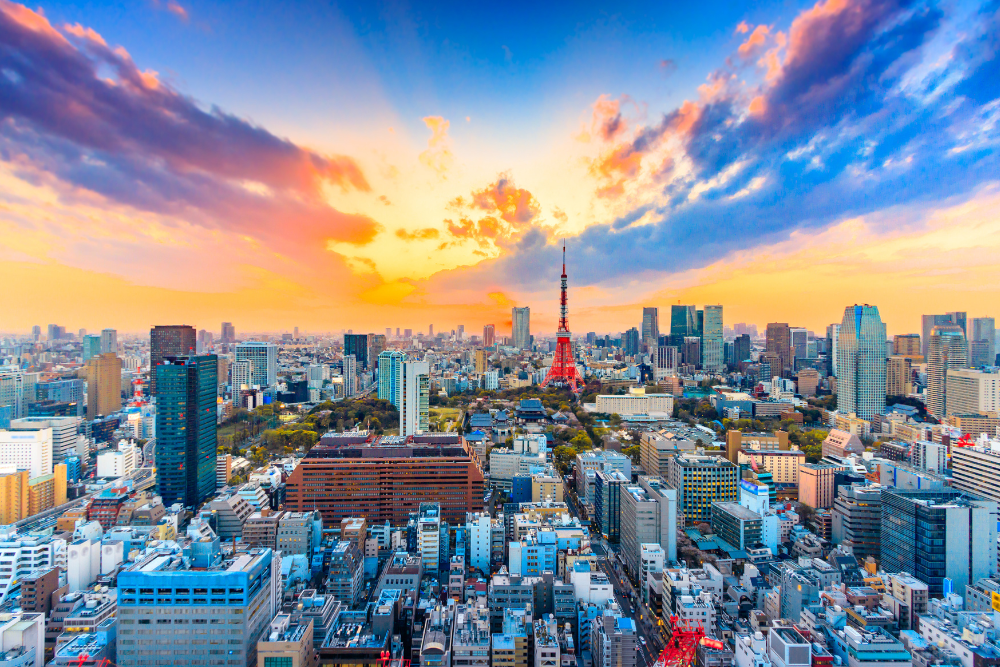Japan is home to some of the most spectacular fire festivals, where flames light up the night sky in centuries-old rituals of purification, prayer, and celebration. These festivals, known as “hi-matsuri” (fire festivals), range from massive bonfires and torches to fiery processions and dramatic performances.
Whether you want to witness flaming torches carried through the streets, experience the spiritual intensity of sacred fire rituals, or take part in a unique cultural event, this guide will show you how to participate in a Japanese fire festival and what to expect.
Understanding Fire Festivals in Japan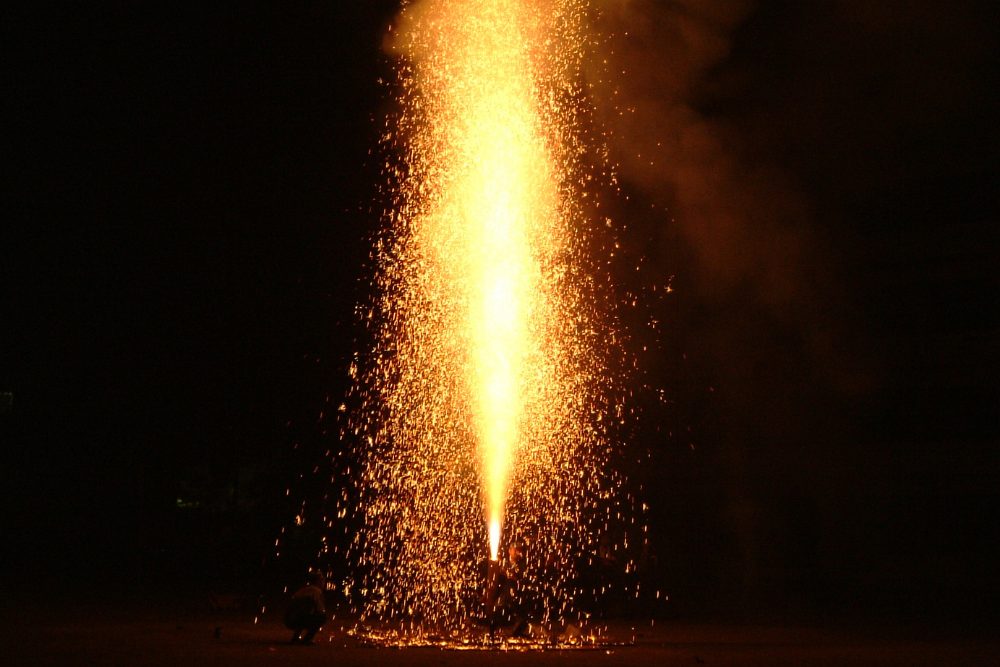
Fire has long held spiritual significance in Japanese culture, representing purification, protection, and renewal. Many fire festivals have roots in Shinto and Buddhist traditions, with fire believed to ward off evil spirits, cleanse the soul, and bring good fortune.
These festivals are typically held in winter or early spring, when communities gather to pray for a bountiful harvest, safety, and prosperity. Some fire festivals also coincide with New Year celebrations, temple rituals, or local legends.
Famous Fire Festivals and How to Join
1. Nozawa Onsen Dosojin Fire Festival (Nagano)
Date: January 15
Location: Nozawa Onsen, Nagano
This legendary festival features a massive wooden shrine set ablaze while villagers defend it in a dramatic nighttime battle. The festival is held to honor the Dosojin, protective deities of travel and marriage.
How to Participate:
- Arrive early to secure a good viewing spot.
- Visitors can watch but only local men aged 25 and 42 (considered unlucky ages) can participate in the shrine defense.
- Expect flying embers, loud chanting, and an intense fire display.
2. Kurama Fire Festival (Kyoto)
Date: October 22
Location: Kurama, Kyoto
One of Kyoto’s most famous festivals, the Kurama Fire Festival features enormous torches, some weighing over 100 kg, carried through the mountain village of Kurama.
How to Participate:
- Arrive by afternoon, as roads close and the small village gets packed.
- Watch locals dressed in samurai-style outfits carry flaming torches.
- Follow the procession up to Yuki Shrine, where the grand fire display takes place.
3. Wakakusa Yamayaki (Nara)
Date: Fourth Saturday of January
Location: Mount Wakakusa, Nara
A dramatic mountainside fire that can be seen from across Nara, this event combines Shinto and Buddhist traditions. After a procession, the entire grass-covered hill is set ablaze in a stunning display.
How to Participate:
- Arrive early at Nara Park for the pre-fireworks ceremony.
- Join the torch procession from the base of the mountain.
- Watch as monks and officials light the mountain on fire, illuminating the night sky.
4. Aso Fire Festival (Kumamoto)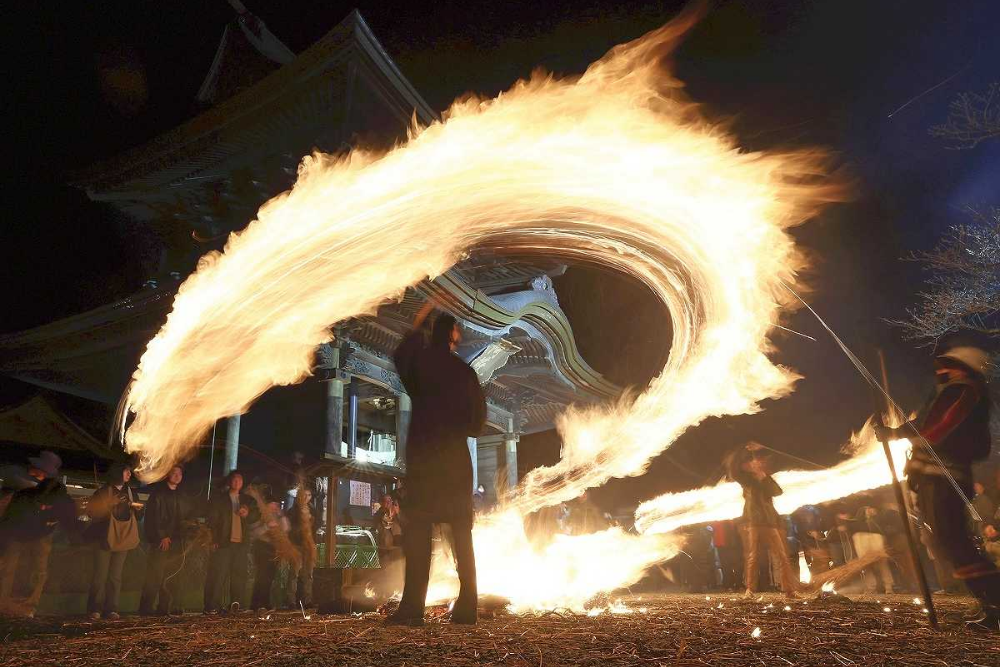
Date: Mid-March
Location: Aso, Kumamoto
Celebrating the arrival of spring, this festival features flaming torches, controlled grassland burns, and firelit parades near the active Aso volcano.
How to Participate:
- Watch the fire-lit procession and fire jumpers along the streets.
- Attend the Dai Himonjiyaki, where a giant fire kanji character is burned into the hillside.
- Join in local festivities with food stalls and traditional performances.
5. Nachi Fire Festival (Wakayama)
Date: July 14
Location: Kumano Nachi Taisha, Wakayama
Held at one of Japan’s most sacred shrines, this festival features huge flaming torches carried down stone steps to honor the spirits of the Nachi Falls.
How to Participate:
- Watch priests in traditional dress carry 12 torches, each weighing nearly 50 kg.
- Visit Kumano Nachi Taisha Shrine, a UNESCO site with breathtaking scenery.
- Witness the purification ceremony, where fire represents spiritual cleansing.
What to Expect at a Fire Festival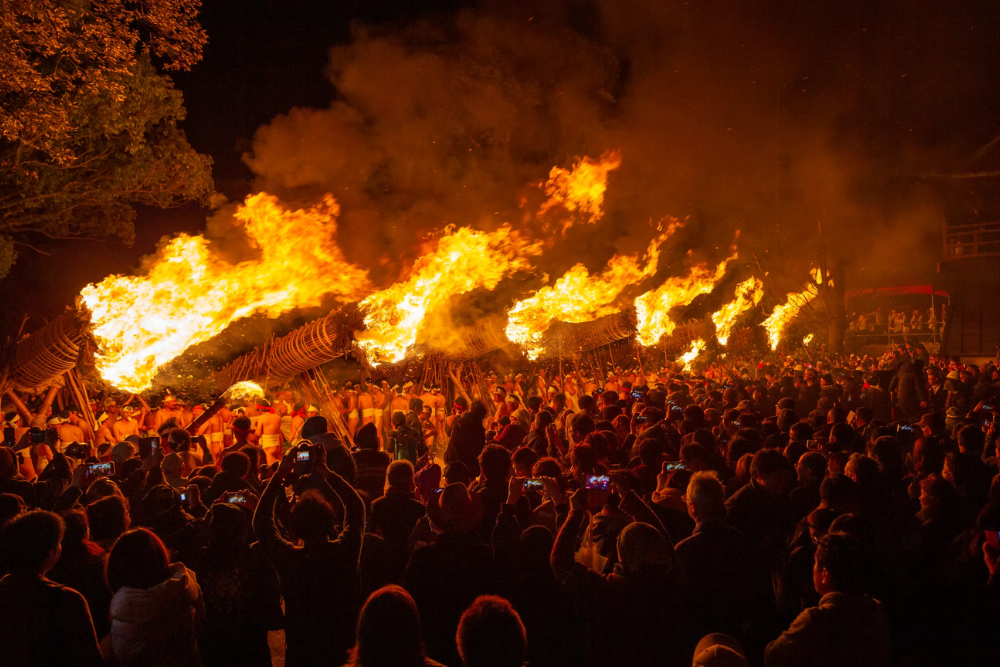
1. Large Crowds and Lively Atmosphere
Fire festivals attract thousands of spectators, so expect busy streets, energetic chanting, and a charged atmosphere.
2. Fire Safety and Precautions
- Stand at a safe distance from flames and flying embers.
- Follow festival rules and listen to officials or local guides.
- Wear non-flammable clothing and avoid loose scarves or long coats.
3. Traditional Rituals and Offerings
- Many fire festivals begin with a Shinto purification ritual.
- You may see priests offering prayers, monks chanting, or locals making offerings.
- Some festivals allow visitors to buy small torches or lucky charms for protection.
4. Food Stalls and Local Delicacies
Like most Japanese festivals, fire festivals have yatai (food stalls) selling local specialties, such as:
- Takoyaki (octopus balls)
- Yaki soba (fried noodles)
- Taiyaki (fish-shaped sweet pastries)
- Grilled mochi or yakitori
Tips for Attending a Japanese Fire Festival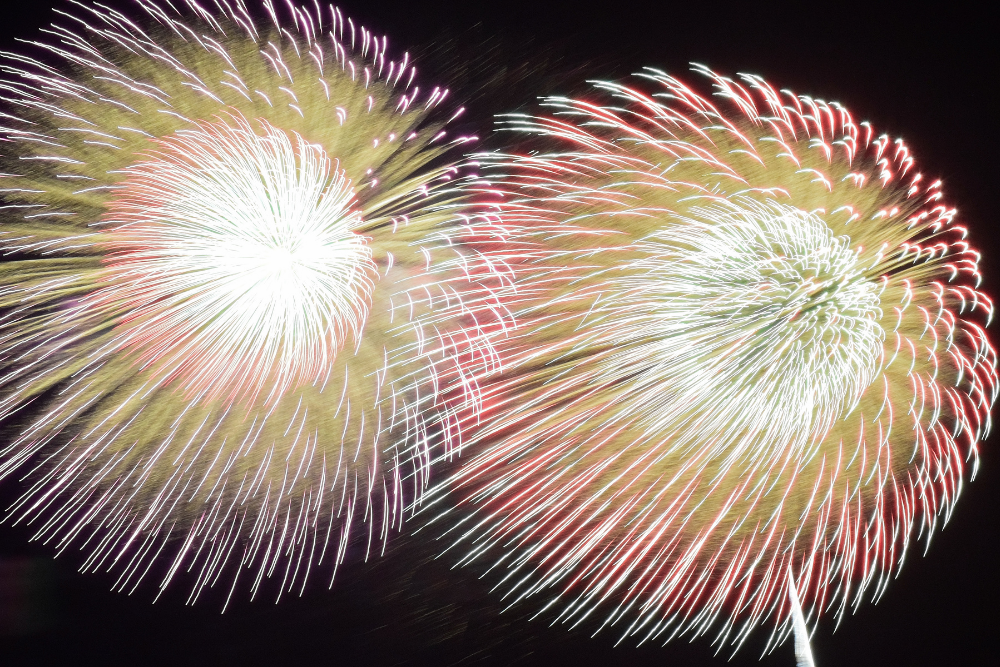
1. Plan Ahead and Arrive Early
- Many festivals take place in small towns or mountain areas with limited transport options.
- Arrive early to secure a good viewing spot and explore the local area.
2. Dress Warmly (If Attending in Winter)
- Many fire festivals occur in cold months, so wear layers and warm clothing.
- Bring gloves, a hat, and heat packs if needed.
3. Respect Local Customs
- Some festivals are sacred Shinto or Buddhist rituals, so observe in silence during prayers.
- Do not interfere with participants or get too close to the flames.
- If invited to participate, follow local guidance and show appreciation.
4. Capture the Moment, But Be Mindful
- Fire festivals offer incredible photography opportunities, but use caution around flames.
- Avoid flash photography during sacred rituals.
- Respect privacy when photographing participants.
Conclusion
Attending a Japanese fire festival is a thrilling and unforgettable experience, blending ancient traditions, dramatic fire displays, and deep spiritual significance. Whether you are watching a mountain blaze in Nara, torches illuminating a Kyoto village, or a shrine set aflame in Nagano, each festival offers a unique perspective on Japan’s fire-worshiping customs.
By planning ahead, respecting local traditions, and embracing the excitement of the flames, you can fully immerse yourself in one of Japan’s most spectacular cultural celebrations.



